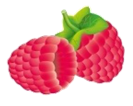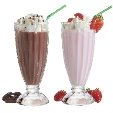Урок "AN APPLE A DAY,KEEPS THE DOCTOR AWAY"
AN APPLE A DAY KEEPS THE DOCTOR AWAY
Objectives:
To revise and practice vocabulary on the topic of the lesson;
To enrich pupils’ vocabulary on the given topic;
To revise grammar material;
To teach to use the gained knowledge and information in speech;
To develop pupils’ skills in listening, reading, speaking and writing;
To provide interactive work in pairs
To develop pupils’ communicative skills;
To develop pupils’ socio-linguistic skills;
To widen the pupils’ outlook:
To bring up the interest towards the traditions of English-speaking countries.
Materials: a laptop, worksheets, a blackboard, posters, cards with dialogues.
Procedure
I. Introduction
- Greetings
T: Good morning, boys and girls, good morning, dear guests. Nice to see you.
Ps: Good morning, teacher. Good morning, dear guests.
T: How are you today?
Ps: We are fine, thank you.
T: Today we have an unusual lesson.
- Announcement of the topic and aims of the lesson
T: Dear boys and girls, dear guests, welcome to our lesson. Look at the blackboard. (Poster with fruit and vegetables) I suppose you can guess the topic of our conversation. So, what is it?
Ps: I think, we’ll speak about usefool food.
T: Yes, you are right. Our today’s theme is “ An apple a day, keeps the doctor away. We’ll speak, read, write and revise some words and grammar rules on the topic “Food”, we’ll watch an interesting video and by the end of our meeting you’ll get to know a lot of interesting things about meals and some dishes.
II. The main part of the lesson
- Phonetic drill
T: Listen to me and say after me.
[˄] butter, mushroom, curry
[æ] cabbage, apple, sandwich, jam
[ı] fish, chips, biscuit
[e] bread, egg, lemon
[i:] tea, meat, beans, meal
[aı] rice, ice cream, pie
- Warming- up
T: Ok. We have already warmed up our tongues, let’s warm up our brains. And our next task is to guess “What is it?” (
- Vocabulary practice
- T: Look at the screen. I’ll read the description, you’ll say the answer
- You need me to make a sandwich or toast.
- I’m yellow and people like me on their pizza.
- I am small round red fruit. I grow on trees.
- It is white. It is oval. It is good to eat for breakfast. It comes from a hen.
- We are a very small round green vegetable.
- Cats like to drink it.
- Rabbits just love this vegetable.
- This is a long yellow fruit. Monkeys love this fruit.
- It can be from orange, apple, banana, cherry. We drink it.
- It is yellow and sweet. Bears like it.
- I am a round fruit. I am usually green, yellow or red.
- It is fruit and colour. It is round.
2) T: Thank you. You are so good. Our next task is “Housekeeping encyclopedia”. Do you know that different products must be kept in different places in the fridge, e.g. fruit and vegetables are usually kept in the bottom of the fridge. And it’s a very bad idea to mix them on one shelf. So, I have got a friend Bob. He’s a good guy, but he’s very bad in housekeeping. I have some pictures of his fridge. Look and say, what’s the odd?
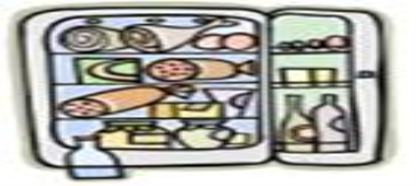
5. 



4. Development of grammar skills.
T: Thank you. It’s time for grammar. Welcome to “Tasty grammar”. In this exercise , we’ll revise a grammar rule. Look at the screen. Here you will see some pictures. I’ll say the word and you should clap your hands two times if the noun is countable or stamp your feet if the noun is uncountable.





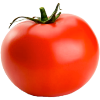
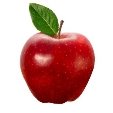



5. Checking homework.
T: OK. At home you had to do two exercises. Open your copy-books and we’ll check how you understood the rule about using the words some and any. Let’s read the sentences.
1. There is …… milk in your mug.
2. There isn’t …… ham for breakfast.
3. There are …… apples in the basket.
4. There isn’t …… ice cream in the fridge
5. There aren’t……oranges left.
6. There’s………cheese on the table.
T: In the second task you had to complete the questions with How much or How many. (
1. How………sandwiches would you like?
2. How………jam do you need?
3. How………tea do you drink for dinner?
4. How………eggs are there on the table?
5. How………sweets have you got?
6. How………juice would you like?
T: Well done. I’m pleased with you. You are so active and energetic today. And let’s work together . On your desks you have a text “British meals”. We’ll read it loudly and you should use the words instead of pictures.
- Reading Comprehension
British meals
The English take four meals a day: breakfast, lunch, tea and dinner or supper. In England breakfast time is between seven and nine. For breakfast lots of British people have a bowl of _ _ or ____
_ or ____ with __
with __ __ or __
__ or __ _ and a ___
_ and a ___ . But the traditional English breakfast consists of fried ____
. But the traditional English breakfast consists of fried ____![]() __, beans, __
__, beans, __![]() _, bacon, fried _
_, bacon, fried _![]() __ and __
__ and __![]() ___.
___.
Lunch time is between twelve and two pm. For lunch they have a __ __, a packet of _
__, a packet of _ _, a piece of __
_, a piece of __![]() __ and something to drink as ____
__ and something to drink as ____ _, __
_, __![]() __, __
__, __![]() __ or _
__ or _![]() _.
_.
Most British people have dinner between 6 and 8 pm. A traditional British dinner (or supper) meal usually consisted of _![]() _ or __
_ or __![]() _ and two different _
_ and two different _![]() . One of the vegetables is usually_
. One of the vegetables is usually_![]() _.Today,
_.Today,
a lot of British people like Italian, Chinese and Indian food. Popular dinner dishes are _ __ , _
__ , _![]() _ or curry. They also like _
_ or curry. They also like _![]() __ and _
__ and _![]() . People often get takeaway meals — they buy the food at the restaurant and
. People often get takeaway meals — they buy the food at the restaurant and
then bring it home to eat.
- Post-reading activities
T: Let’s check how you understood the text. Please agree or disagree with the statements. Who wants to be the first?
- The English have four meals a day.
- In England breakfast time is between seven and nine.
- The traditional English breakfast consists of a glass of milk and some biscuits.
- Curry is a popular dish today.
- British people usually have three different vegetables for dinner.
- British people don’t like fish and chip.
Answer the questions
- How many meals do the English have a day? What are they?
- What time do they have breakfast?
- What do they usually have for breakfast?
- What do British people usually have for lunch?
- When do they have dinner?
- What do British people like eating for dinner today?
T: OK. You are cool. Tell me, please.
What do you usually have for breakfast?
What do you usually have for lunch?
What do you usually have for dinner?
8. Relaxation
T: Very nice. I see you are smart children. You work very hard. It’s time to relax a little bit. Look at the screen. Let’s sing and dance. Song “Go Bananas”
9. Listening Comprehension
T: You are wonderful. Now you will learn more information about traditions in some British families. Be very attentive because after watching this episode you’ll do the task.
(Children watch the video)
10. Post-listening task
T: Now, let’s see how you understood the video.
Choose the correct answer
- The boy’s name is …..
a) Tom b) Nick c) John
2. He is ……… years old.
a) fifteen b) twelve c) ten
3. He lives in …….
a) London b) Oxford c) Cambridge
4. Children have got ………. in their lunch boxes?
- a packet of crisps, a carton of juice, an apple, a banana and a sandwich
- a packet of crisps, a carton of juice, a pear and a banana
- a packet of crisps, a bottle of water, an apple, an orange and a sandwich
5. Molly’s orange juice is …….
a) on the table b) in the fridge c) in the cupboard
6. The family sometimes has got take-away food on…
a) Friday b) Sunday c) Saturday
7. Molly likes …… food
- Indian b) Chinese c) Italian
8. Nick’s favourite food is …
- Curry b) pizza c) fish and chips
T: You've done everything correctly.
- Game
T: Let’s play game “Fruit salad”. I’ll give you toy fruit and vegetables. Your task is to put those of them which I name into the bowls on your desks
T: Children, you are bright, today.
T: Imagine that we have come to Great Britain and we are at the restaurant. I’ll give you phrases. Your task is to put them in the correct order and make up two dialogues. The first pair who is ready will read the dialogue .
12. Work in pairs.
Dialogues “In the café”
Dialogue 1
A: I’m thirsty. Is there anything to drink?
B: Would you like some orange juice?
A: No, thanks. I don’t like orange juice.
B: How about some tea?
A: Oh, yes, please! I’d love some tea!
Dialogue 2
A: I’m hungry. Is there anything to eat?
B: Would you like pancakes?
A: No, thanks. I don’t like pancakes.
B: How about pudding?
A: Oh, yes, please! I’d love a piece of pudding!
T: Thank you very much. It’s time to sum up our lesson. But at the end of our meeting I have prepared one more task for you. Here I have a crossword. You are to fill in this crossword and say the hidden word.
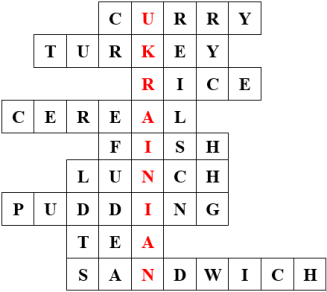
- Molly’s favourite dish
- People eat it for dinner at Christmas.
- The Chinese often eat it.
-
 British children like to eat it with milk in the morning.
British children like to eat it with milk in the morning.
- ( …. and chips )
- British people have it between twelve and two pm.
-

- British people like to drink it .
- A lot of people have it in their lunchboxes.
T: Thank you. So, what’s the hidden word?
Ps: Ukrainian.
Homework.
T: You should draw the picture and write 10 sentences about “ Healthy food”
III. Summing-up
T: Thank you for your work. I can say that you really worked well and have shown that you are smart students. I’m satisfied with your work. Some of you worked very well today, but some have to be more attentive and more active. But most of all I’m pleased with the work of…
….you worked well too but made some mistakes. You get…
The rest get “Thank you” today. Try to be active and master your English.
Thanks for watching. Good-bye.


про публікацію авторської розробки
Додати розробку








